8 Types of Locks and Where to Use Them
Keep Your Home Safe and Secure
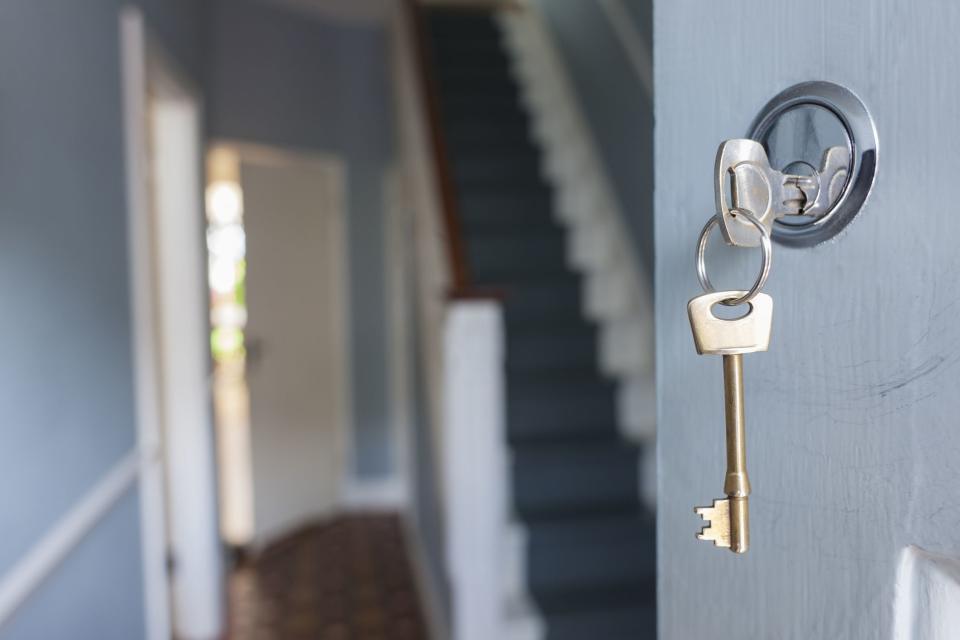
Ian Nolan / Getty Images
Reviewed by Johnathan Brewer
Locks are one of the most essential inventions throughout human history because they allow you to keep your home and belongings secure while sleeping or away from the house.
Many types of household locks are used, including specialized locks for keeping young children out of dangerous items, like cleaning or pest treatment products. Locks are commonly used when traveling to ensure that the items in your luggage are safe during transit.
This guide breaks down eight common types of locks, including the purpose, benefits, and drawbacks. Learn more about the various types of locks so you can choose the best lock based on the situation to protect your home, family, and belongings.
Types of Locks
Cam Locks
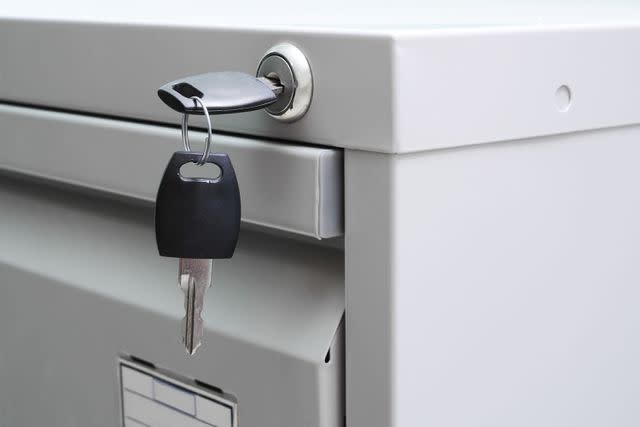
asadykov / Getty Images
Best for: Securing cabinets, desks, and furniture compartments.
Cam locks are light-duty locks commonly used to secure cabinets, drawers, and other small compartments. They have a cylindrical base with a keyhole and a metal latch called the cam. When the key is inserted into the keyhole, the user can turn the key to rotate the cam into the locked or unlocked position.
These locks offer basic security, but the straightforward, lightweight design makes them relatively easy to break, so they should not be used to lock homes, sheds, or highly valuable containers.
Knob Locks
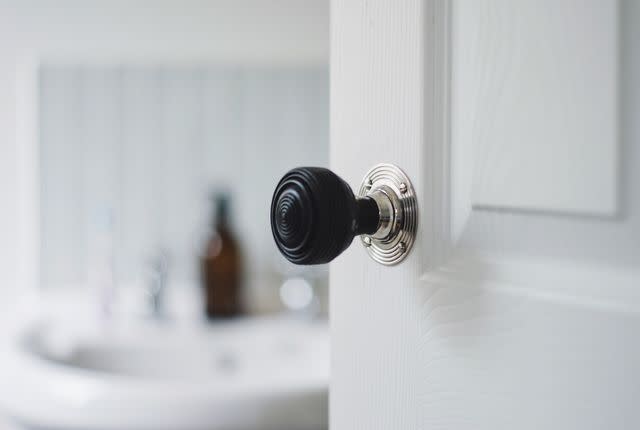
robert reader / Getty Images
Best for: Securing indoor door locks.
Knob locks are designed for indoor door locks to prevent the doorknob from turning and opening the door. These locks are most commonly seen on residential bathroom doors to provide basic security and privacy for anyone using the bathroom.
However, knob locks should not be installed on exterior doors because they are relatively easy to bypass or break, leaving the home vulnerable to a break-in.
Lever Handle Locks
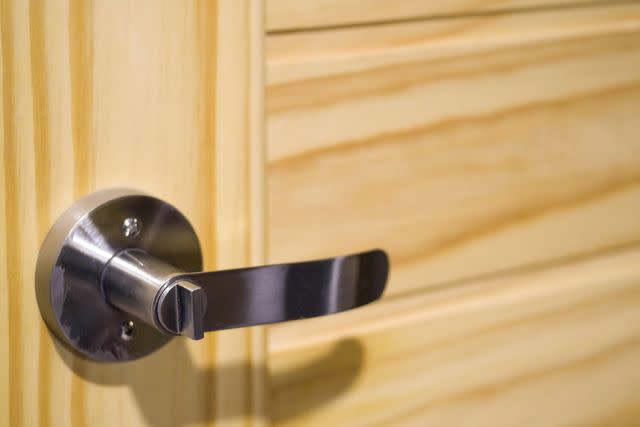
Jakraphong Pongpotganatam / Getty Images
Best for: Securing interior doors and ADA compliance.
Lever handle locks are similar to door knob locks. Instead of a knob, the door has a handle for opening and closing the door. The locking mechanism is part of the handle. These locks can use keys or push-button locks.
Like door knob locks, these are used for internal doors in homes, commercial buildings, and public spaces like bathrooms. These door openings are easier to use than knobs for people with disabilities (ADA compliance). These are not suitable locks for entry doors since they can be broken into forcefully.
Padlocks
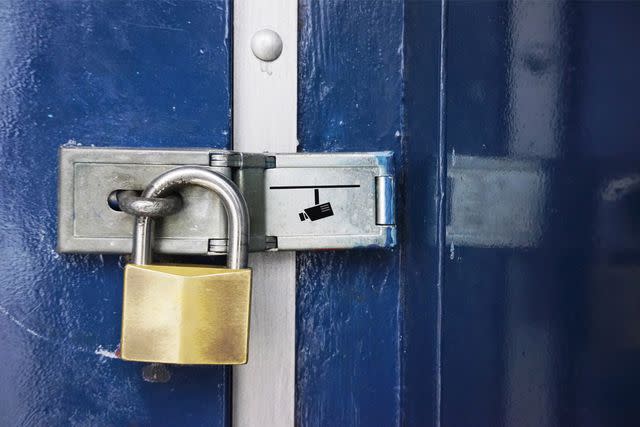
Klaus-Dieter Thill / EyeEm / Getty Images
Best for: Locking sheds, lockers, luggage, tool boxes, and garage doors.
Padlocks are a common option for securing many items and compartments, such as storage sheds, luggage, or toolboxes. Instead of being installed in the door, the knob, or the lever, padlocks are self-contained locking mechanisms that can be removed entirely from the locking latch on the door or compartment. Unlock the padlock to open the shackle or rod, then slide the shackle through the locking latch on a door or compartment. To lock the padlock, push the shackle's open end down into the lock's body.
Combination padlocks can only be opened if you enter a set series of numbers into the lock, and they are regularly used to lock school lockers. There are also key padlocks that unlock with a specific key and TSA-approved padlocks for luggage that can be opened with a master key held only by TSA representatives to inspect checked bags.
Deadbolt Locks
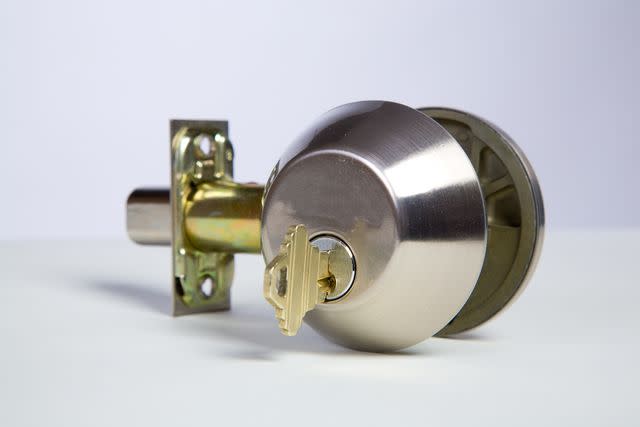
RichLegg / Getty Images
Best for: Securing exterior doors to homes and businesses.
A deadbolt lock is the most common option for home security, consisting of a thick metal bolt that protrudes through a strike plate and into the door frame to prevent the door from being opened. Enter the correct key into the keyhole and turn the key to open or close the deadbolt.
You can also put deadbolt locks on compartments or drawers that hold highly valuable items or documents instead of relying on a lightweight cam lock.
Electronic or Keypad Locks
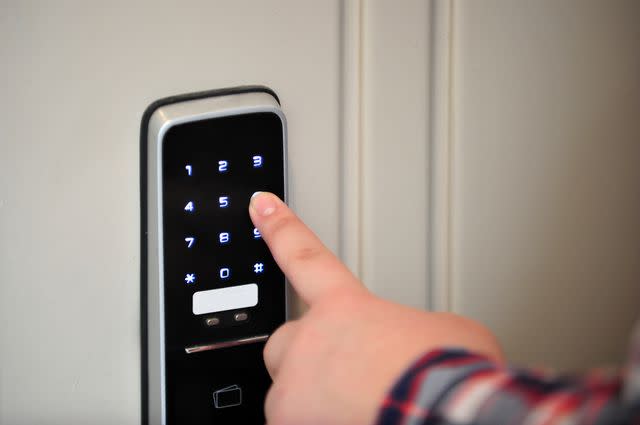
Im Yeongsik / Getty Images
Best for: Keyless security and Smart Home integration.
Electronic locks typically rely on the deadbolt, knob, lever, and cam lock mechanisms for the actual lock design, but they open using an electronic keypad, fingerprint scanner, or even voice-recognition software instead of a physical key.
These locks are great for homes or businesses because you don't need to make multiple copies of a physical key. You can all share a code or program individual codes for each person with the authority to access the premises.
Tip
Electronic locks are great for rental properties or places where multiple people may be making entry at any given time.
Mortise Locks

Ping Li / Getty Images
Best for: Higher security option, good for front door entry.
Mortise locks are sturdy locks that are reliable and hard to break into. A deadbolt lock is incorporated into the locking mechanism. These locks can also serve as a doorknob.
The locking mechanism is part of the door, and the lock meets the lock plate on the door jamb. It may include up to five levers or a locking structure in its composition, the first is a non-locking spring action latch, and the second is a deadbolt.
Smart Locks
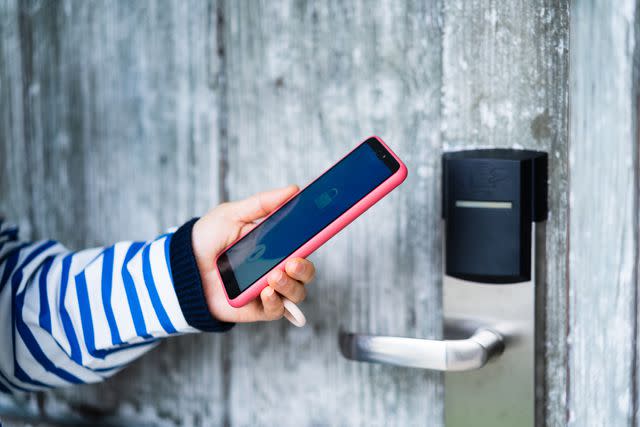
dowell / Getty Images
Best for: Keyless security, Smart Home integration, and short-term rental properties.
Additionally, some electronic locks are made to be compatible with Smart Home systems over wifi or Bluetooth. You can also pair a smart lock with a smart security camera to see who is at the door. This allows you to lock and unlock the door with an app on your phone, even if you are still at work, so the kids can get in when they come home from school.
Many of these systems pair with Google, Alexa, and Apple Smart Home products. These options work effectively for bed-and-breakfast and short-term rentals, giving the ability to remove and add access when renters come and go. This system requires access to wifi and a Smart Home hub. If you are looking for this similar convenience but do not want to connect through wifi, a Bluetooth-enabled lock within Bluetooth range (around 40 feet) can also be used to access and control the lock.
Choosing a Lock
When looking for a lock, the first factor you need to consider is where the lock will be used. For instance, cam locks are great for indoor cabinetry but aren't made for locking an exterior door. The best type of lock for the situation largely depends on the location.
The various types of locks are made for distinct purposes, so selecting the right type shouldn't be too difficult. However, it's still recommended to research individual products to ensure that you choose a high-quality lock that can keep your home, family, and belongings safe and secure.
Interior Door Locks
Consider installing knob or lever locks for any interior doors requiring a locked door, like a bedroom or bathroom. Push-button privacy door knobs and handles are the best choice, allowing doors to be opened and closed with the turn of the handle or knob.
Exterior Door Locks
Opt for deadbolts, mortise locks with deadbolts, or electronic locks for the exterior doors of a home. Deadbolts are the most secure and sturdy locks—either single-cylinder or double-cylinder. Deadbolts are also rated from Grade 1 to Grade 3. Grade 1 is the highest security.
Deadbolts are only as secure as the material into which it is installed. For exterior doors, you want a solid door. Hollow doors can be kicked in or broken through; meanwhile, deadbolt locks installed in solid-core doors are the most secure option. They can be strengthened by using solid metal strike plates or longer bolts that slide deeply into the door frame.
Other Lock Uses
Cam locks are lower-security lock options installed on desk drawers and file cabinets to prevent kids or snooping co-workers away from important documents. They are a simple cylinder lock with an L-shaped locking mechanism. Mortise locks are the go-to lock for sliding glass doors; they are highly secure and provide reasonable protection against forced entry.
A padlock is a good option to secure a storage shed, a garage, a locker, or a bike lock. Padlocks can also be put on your luggage to prevent theft; however, ensure they are TSA-approved so that airport personnel do not cut off the locks if they have to search a checked bag.
Lock Sizes
Before buying a new lock set, measure the current lock in the door to determine the backset measurement. A door's backset is the distance from the edge of the door to the center of the 2 1/8-inch bore hole, where the knob or deadbolt is mounted.
The two common backsets for residences are 2 3/8 and 2 3/4 inches. The measurement should match the latch or bolt size of your door's hardware.
Door Handedness
Door-handedness refers to the way the door swings as it opens. For example, if the hinges are on the right side of the door, it's a right-handed door. It's important to know whether your door is right- or left-handed when ordering a new lock for your door. Some locks are universal, but others are specified for a right or left-handed door. Most people are right-handed; reaching for the knob on the right-hand side of the door feels more natural.
Frequently Asked Questions
What types of locks don't require keys?
Keyless door locks vary from combinations locks and keypads to proximity key fobs, key cards, and biometric locks.
What types of locks should be used on exterior doors?
The best types of locks for exterior doors are mortise, deadbolts, and electronic locks.
What is the best and safest lock for a front door?
Deadbolts are the best and safest locks for a front door.
Read Next: 11 Home Security Companies We Trust
Read the original article on The Spruce.

